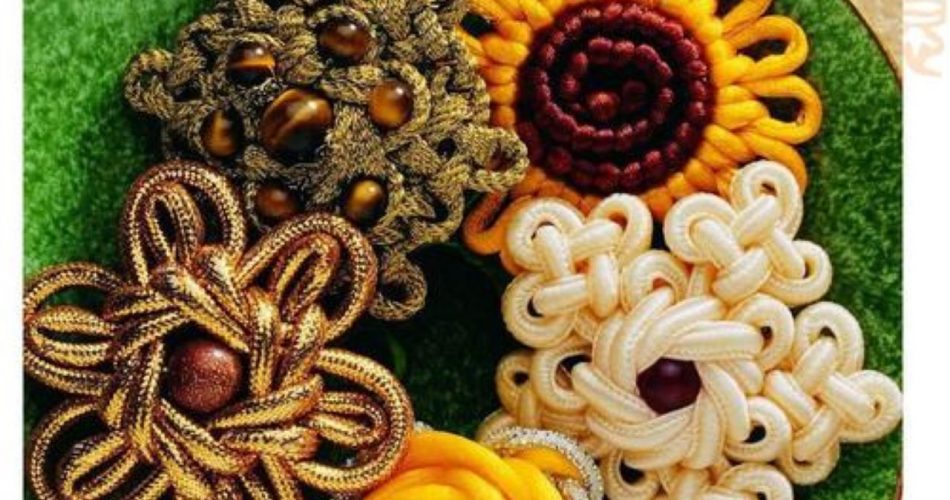Chinese knots are a traditional handcrafted handicraft and one of the treasures of Chinese culture. It is woven with silk thread from beginning to end, and each basic knot is named in line with its shape and meaning.
It originated from the knotting of ropes in ancient times, later extended to the ritual of the Han Dynasty, and continued to the jade pendant decoration of the Qing Dynasty. Finally, it evolved into today’s decorations.
These beautiful handicrafts cannot only be used for decoration, but also carry rich cultural connotations and blessings. This article will introduce nineteen types of Chinese knots.
According to the weaving techniques, Chinese knots are divided into three types, namely, basic knots, variable knots, and combination knots.
Table of Contents
# The Basic Knots
Basic knots are the foundation and basic forms of Chinese knot weaving. It is usually composed of single line, double lines, or multiple lines, with a simple and symmetrical shape.
1. Flat knot

Flat knot, also known as square knot, is an ancient and practical knot.
A flat knot is formed by weaving the two ends of a line or object around the axis.
“Flatness” means equal height, no comparison, and at the same time, it also means conquering and stabilizing. Therefore, flat knots symbolize longevity, peace, and prosperity.
Flat knots are often used to weave decorations, bracelets, straps, and three-dimensional dolls on teapots due to their small and beautiful appearance, simple structure, ease of learning, and variety. They are also often paired with other accessories to attach to circular objects.
2. Double-coin Knots

The Double Coin Knot, also known as the Money Knot or Double Gold-Thread Knot, is named after its shape resembling the half-stacked pattern of two ancient Chinese copper coins.
In ancient times, the double-coin knot symbolizes the combination of good deeds and the widespread development of financial resources.
Double coin knots, with their symmetrical and exquisite appearance, are commonly used for interior decoration, gift giving between family and friends, and personal belongings.
3. Double-connection Knot

Double-connection knots are a kind of more practical knots.
A double connection is formed by connecting two single knots together.
Its knot shape is small. Its biggest characteristic is that it is not easily loose. Therefore, it is often used to weave the beginning or end of a knot decoration, and sometime, it is used to weave the decorative knot in the middle of a necklace or belt, giving it a unique flavor.
4. Cross Knot
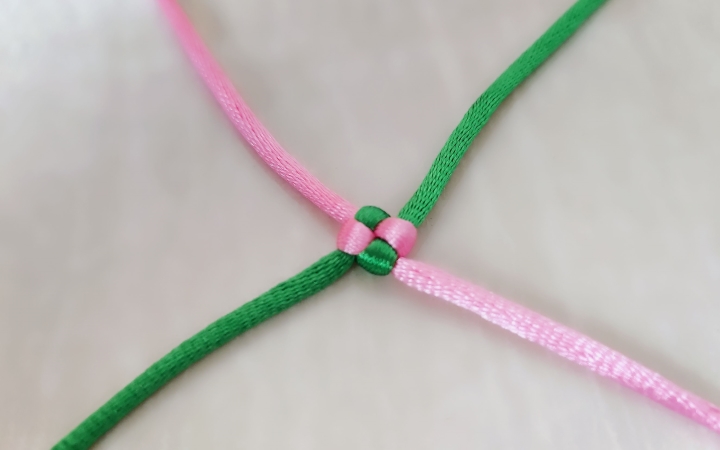
The cross knot, with the character “十” on its front, is therefore called a “cross knot”. Its back is square, so it is also known as a square or square knot. At the same time, it is also known as the success knot or crown knot.
Its knot shape is small and simple, and people weave cross knots quickly. Cross knots are generally used in the combination of accessories and pendants.
The character “十” means satisfaction, so the cross knot symbolizes perfection, a hundred year old love, and so on.
5. The “万” Character Knot
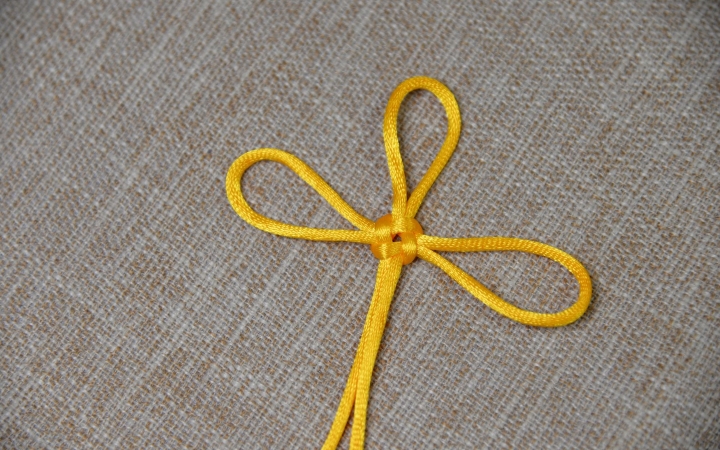
The “万” character knot is named after its heart resembling the “swastika” (Sanskrit for the Chinese character “万”). It is also called the “sorrel knot” because its shape is similar to that of sorrel.
The character “万” symbolizes a large quantity. Therefore, The character “万” knot delivers the meaning of good luck in all things, blessings and longevity for generations, and auspiciousness and blessings for all.
It is worth noting that when you weave a “万” character knot, the tightness of the rope should be maintained, otherwise it is prone to loosening.
In addition, during the weaving process, attention should be paid to the direction of the rope to ensure that the shape of the woven “万” character knot is beautiful.
6. The “八” Character Knot

The “八” character knot, as its name suggests, is formed in the shape of an “8”.
In Italy, people refer to the “八” character knot as the “royal knot” because its shape resembles the emblem of the Italian royal family.
In addition, the “八” character knot also symbolizes honest love and unchanging friendship. So, some people also refer to the “八” character knot as the love knot.
There are two weaving methods for the “八” character knot based on the thickness of the rope.
When the rope is thicker, cross the rope ends first, wrap the rope head around the main rope, then pass through the rope loop, and tighten it.
When the rope is thin, fold the rope end in half, turn the folded part twice, then thread the rope end through the rope loop, and tighten it.
The “八” character knot can prevent slipping, so it is often used in outdoor activities such as navigation, rock climbing, and wilderness survival.
7. Three-ring Knots

Three-ring knots are simple and beautiful.
It is made by interweaving a rope. Hence, when you weave other ropes, a three-ring knot can be made on top to increase variation.
The three-ring knot symbolizes family harmony and happiness.
8. Double-ring Knot
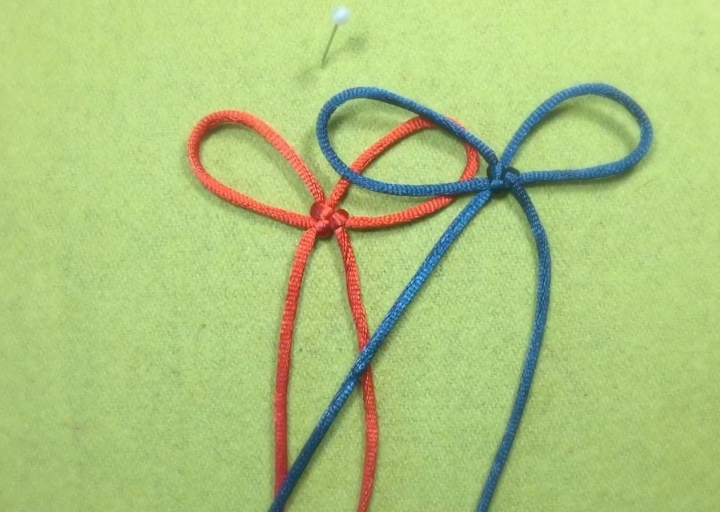
A double-ring knot, also known as a double-loop knot, is named after a knot that is woven in two circular shapes.
Double-ring knots can be woven with both double and single ropes.
The “ring” has a continuous meaning, so the double-ring knot symbolizes longevity and good fortune.
9. Peruvian knot

The Peruvian knot is one of the basic knots of the Chinese knot.
It can be used flexibly, and it is commonly used at the end of small pendants, as well as to decorate earrings, necklaces, or flowers.
The Peruvian knot, due to its overall rotational layering, has a symbolic meaning of rising upwards and rising step by step.
10. Button knot
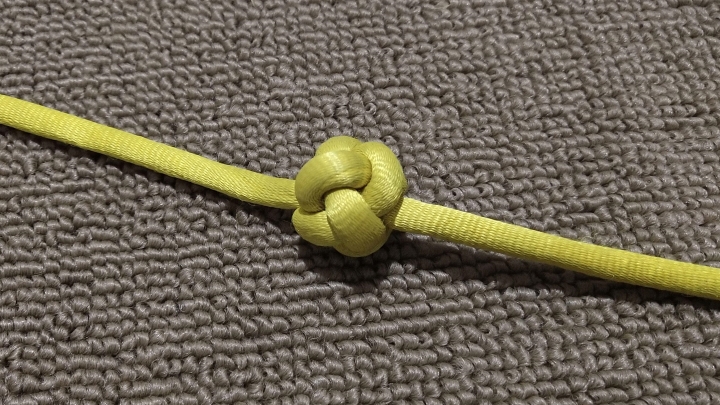
Button knot, also known as knot button, is called as spinning cloth button by the older generations. It is also called a diamond knot because its structure resembles a diamond.
In Chinese clothing, button knots are not only practical, but also beautiful. Meanwhile, Chinese knot bracelets often end with button ties.
The button knot symbolizes unity and cooperation among all.
# The Extended Knots
The extended knots are formed by deforming, combining, and innovating the basic knots. They also demonstrate characteristics of basic knots, but they are often adjusted in certain parts to make the appearance of the entire knot more unique.
11. Osmanthus knot
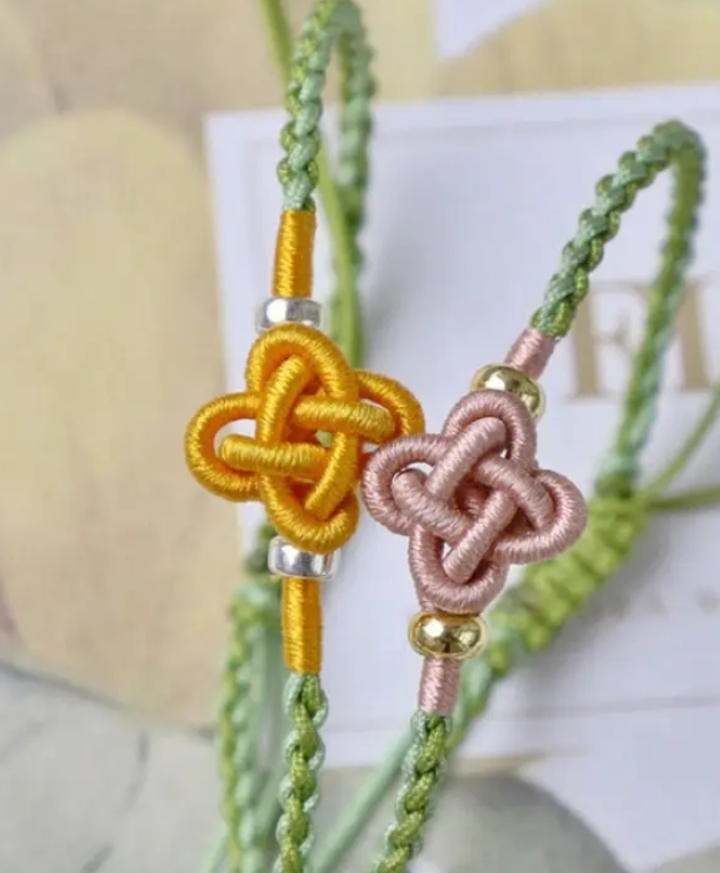
Osmanthus knot is named after its shape resembling osmanthus.
Osmanthus knot evolves from all basic Chinese knots.
The osmanthus knot symbolizes good fortune, auspiciousness, beauty, elegance, and nobility.
12. Hydrangea knot
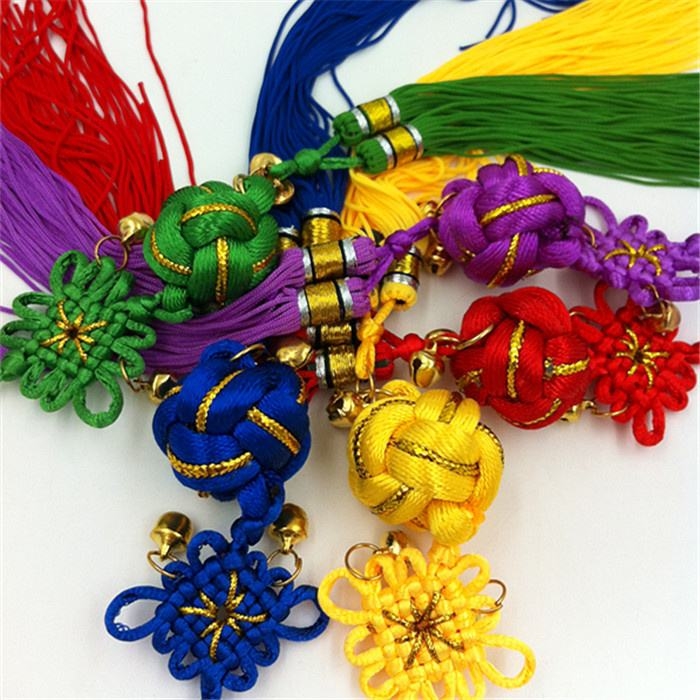
Embroidery-ball knot or hydrangea knot is an ancient traditional Chinese handmade weaving craft, belonging to a type of Chinese knot.
As a type of Chinese knot, this kind of knot is an ancient traditional Chinese handmade weaving craft.
The hydrangea knot is composed of five connected knots of pulp and grass. During its weaving, it is important to ensure that each ring is of the same size and connected in the same direction, so that the knot shape is smooth and round.
“Embroidered balls” were considered auspicious objects in ancient China, with perfect symbolism. Therefore, the embroidered-ball knot conveys the meaning of reunion and happiness.
13. The Complete Ten Knot
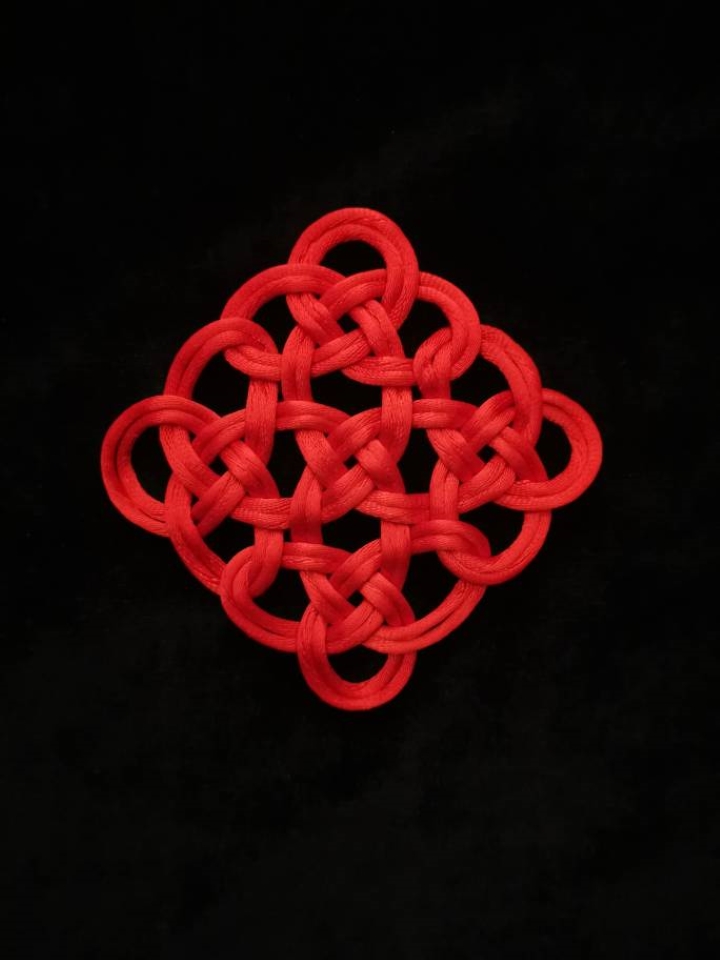
The “Complete Ten” Knot is a combination of five Double-Coin Knots. Five-double coins are equivalent to ten copper coins, hence the name Ten Complete Coins.
When you make complete ten knots, it should be noted that the entire pattern should be circular.
The Complete Ten Knot symbolizes perfection and wealth and prosperity.
14. Compound-wing disc long knot
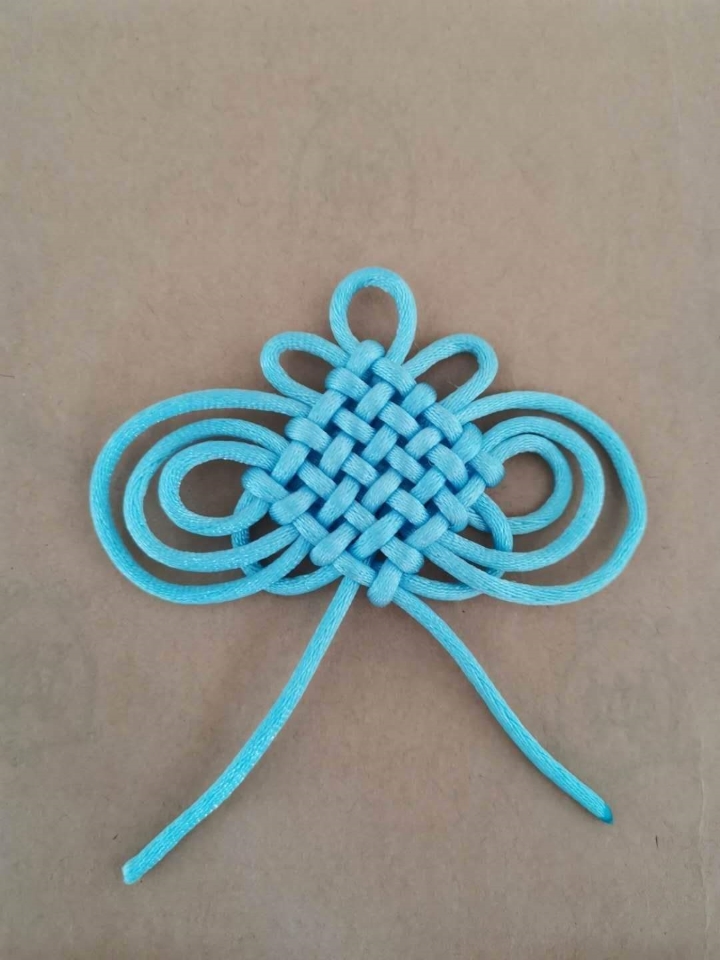
The compound-wing disc long knot derives from the variation of the disc long knot.
This knot changes the order of the winding of the disc long knot. The woven knot can also be pulled into different sizes and shapes as needed.
The compound-wing disk is coiled and connected by threads, symbolizing continuous and long-lasting love.
15. Pipa knot
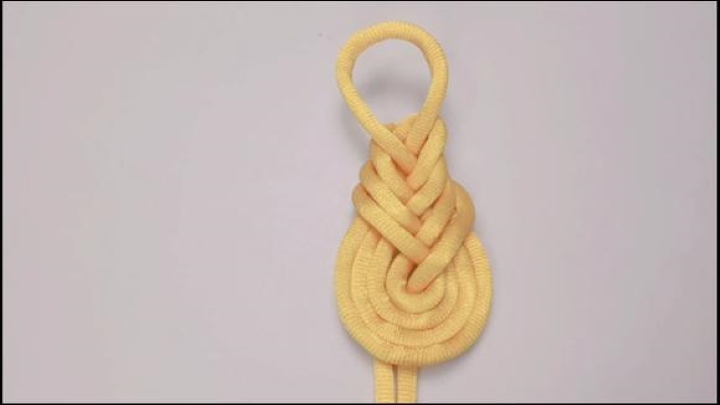
The pipa knot is named after its resemblance to the ancient instrument pipa.
It is based on the button knot and is modified accordingly.
The pipa sounds the same as the auspicious object “枇杷” (“loquat” in English). So, the pipa knot symbolizes good weather and good luck.
# The Combination Knots
Combination knots are made using methods such as thread extension to flexibly combine various basic knots and complete a set of ever-changing knots. Through clever combinations, more complex and diverse weaving effects and patterns can be created.
16. Auspicious Knot
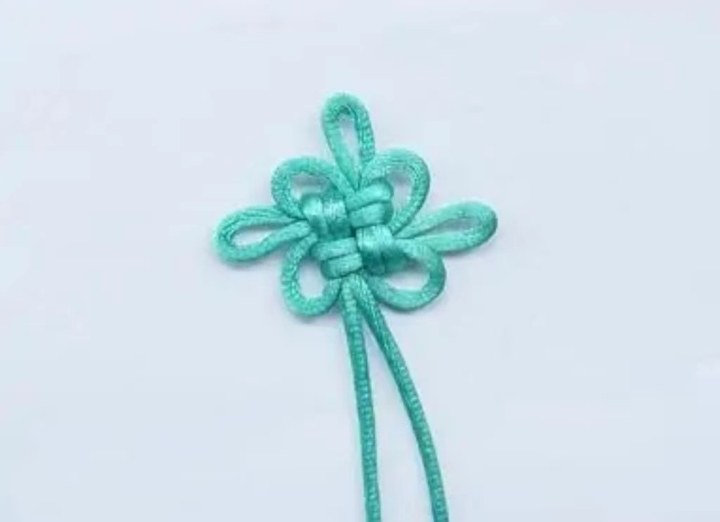
The auspicious knot, also known as the “seven-circle knot”, is a popular knot decoration in Chinese knots.
The auspicious knot is an extension of the cross knot, with a simple weaving method, beautiful knot shape, and diverse variations. It is commonly seen in the clothing of Chinese monks and the decorations of temples.
The Chinese character “吉” (good luck in English) represents beauty and benefits, while the Chinese character “祥” represents blessings and goodness. Thus, auspicious knots symbolize good luck, peace, and prosperity.
17. Fangsheng Knots
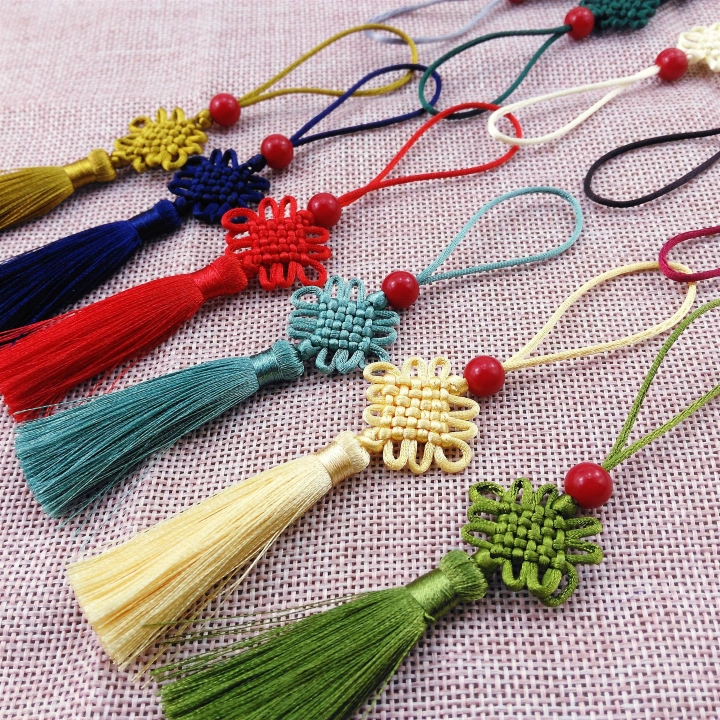
“Fangsheng” knot is named after its resemblance to Fang Sheng (a type of jewelry formed by overlapping two diamond shaped parts).
This knot is composed of a chime knot and a disc long knot.
“Fangsheng” knot embodies the beautiful wish of unity and mutual connection.
18. The Character “寿” Knot

The character “寿” knot is named after the character “寿” as the knot shape.
It is formed by the combination of multiple sorrel knots.
The character “寿” knot is the most auspicious knot, which can be hung separately or woven into pairs of clasps to give as a gift to the elderly.
This knot is both beautiful and elegant, and it conveys the meaning of both longevity and happiness.
19. Halberd Knot
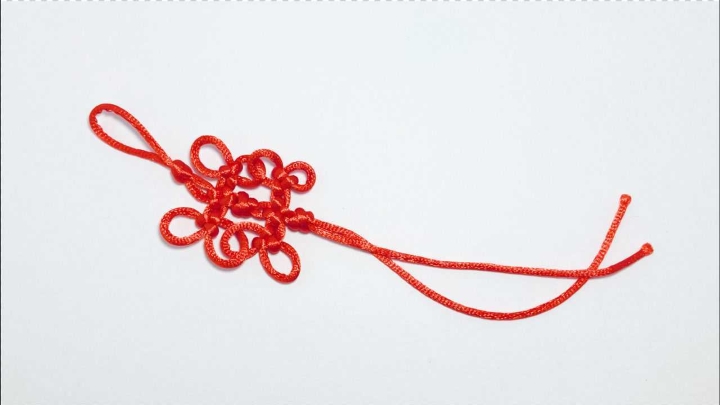
Halberd knot is a handmade woven product with a long history.
It is composed of double-ring knots and double connections.
The Chinese character “戟” and “吉” have the same pronunciation but different sounds. Therefore, taking the meaning of auspiciousness of “吉”, the halberd knot symbolizes good luck and rapid promotion.
The above are 29 types of Chinese knots, but there are far more than these types. There are also many other Chinese knots, such as bow knots, dragon and phoenix knots, and crane knots.
Whether it is a basic knot, an extended knot, or a combination knot, proficient weaving skills and meticulous craftsmanship are required to make exquisite Chinese knots.
# FAQs about Chinese Knots
1. Are Chinese knots all red?
Chinese knots are mainly red, but they are not all red. They can also be yellow, green, blue, and purple.
2. Do different colors of Chinese knots have different meanings?
Red knots represent happiness and a beautiful life; Yellow knots mirror wealth and prosperity; Green knots represent health and longevity; The blue knot represents reunion and happiness; The purple knot represents wisdom and success.
3. How can I get a Chinese knot?
You can make Chinese knots by purchasing ropes and consulting online tutorials. Handmade Chinese knots can not only be decorations, but also gifts for family and friends to showcase your creativity and affection.
In addition, you can also buy Chinese knots through websites such as Amazon, eBay, and AliExpress.
4. What is the meaning of Chinese knots in feng shui (geomancy)?
In feng shui, Chinese knots symbolize good luck, playing a role in warding off evil, avoiding disasters, resolving bad luck, and attracting good fortune and wealth.
5. Which position is the best for hanging Chinese knots at home and what are the requirements?
In feng shui, it is believed that Chinese knots are suitable for hanging on the main wall of the living room, hallway, or bedside of the bedroom.
On the one hand, it serves as a decoration. On the other hand, Chinese knots symbolize auspiciousness and peace. Hanging them in prominent positions at home can enhance the family’s fortune.
However, Chinese knots cannot be hung in places with poor ventilation, lighting, humidity, and darkness, which not only fails to allow Chinese knots to play their due role, but also exerts negative impacts on one’s own feng shui.
6. How many Chinese knots are usually hung at home?
Generally speaking, 1-3 knots in China are most suitable, as excessive number of knots may be harmful to feng shui at home and are also ugly as a whole.
One Chinese knot represents the rolling financial fortune; Two Chinese knots reflect pairing and happy families; Three Chinese knots represent a safe and smooth home.
